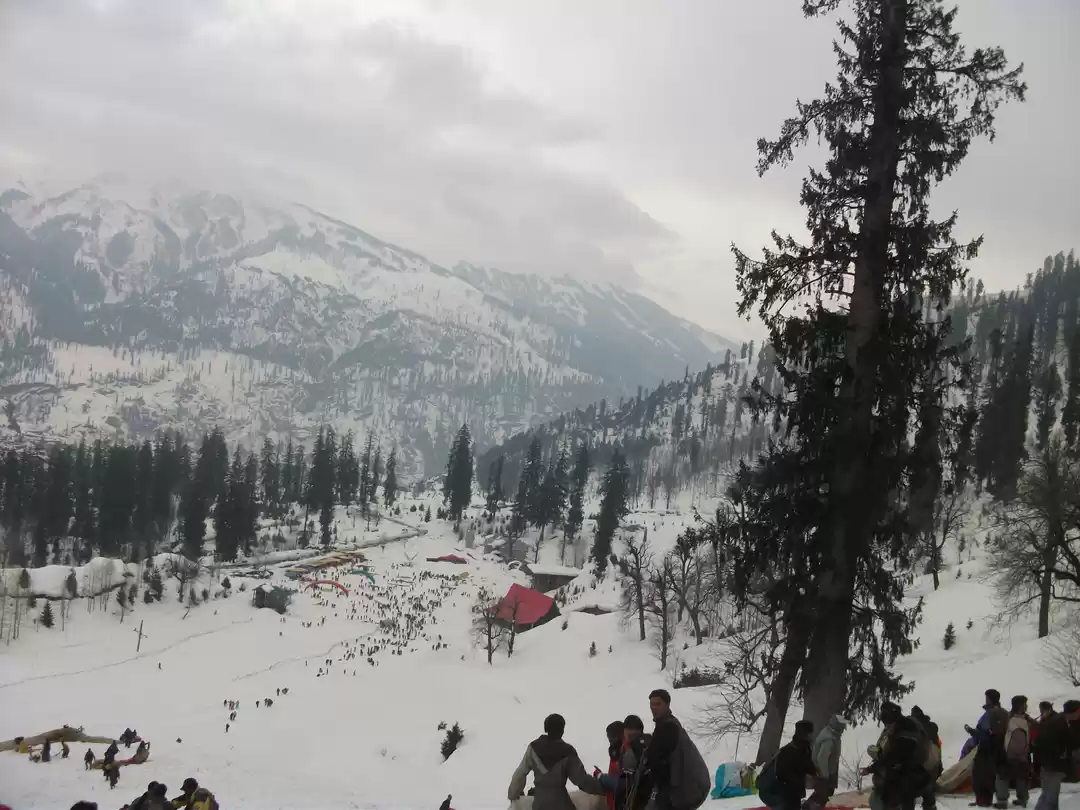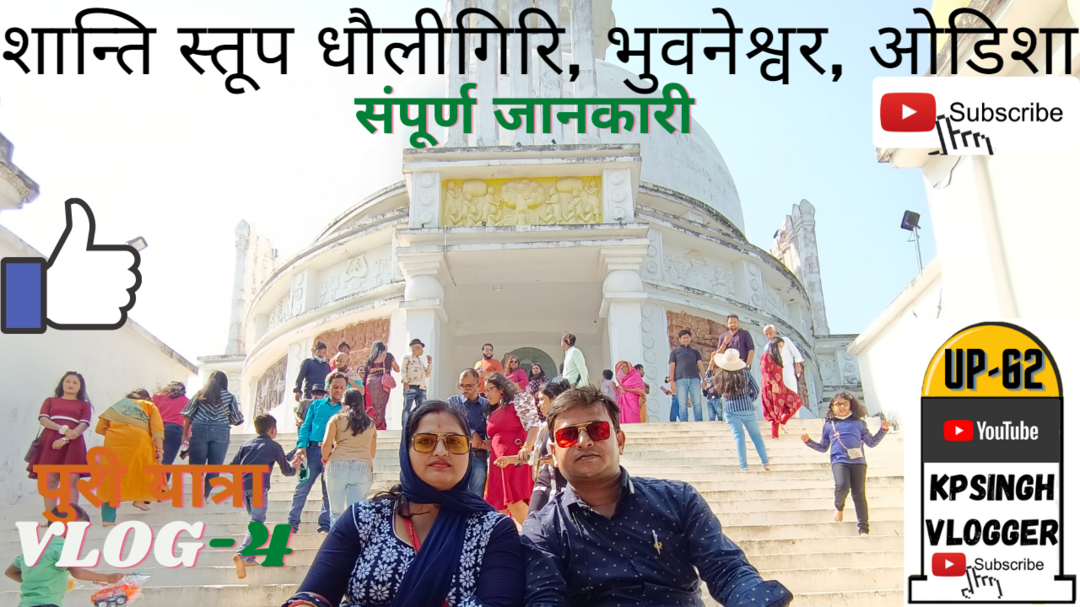Shanti Stupa is a magnificent white-domed structure that stands atop a hill in Leh, Ladakh. It is one of the most popular tourist attractions in the region, and for good reasons. Shanti Stupa offers stunning views of the snow-capped mountains, the Leh valley, and the sunrise and sunset. It is also a symbol of peace and harmony, as it was built by Japanese and Ladakhi Buddhists to commemorate 2500 years of Buddhism and to promote world peace.
If you are planning to visit Leh Ladakh, Shanti Stupa should be on your itinerary. In this article, we will tell you everything you need to know about Shanti Stupa, including its history, architecture, highlights, best time to visit, how to reach, and nearby places to visit. Read on to find out why Shanti Stupa is a must-visit place for anyone who loves nature, culture, and spirituality.
How to Reach Shanti Stupa?
Shanti Stupa is located about 5 km from Leh main bazaar, and you can reach it by various modes of transport. You can take a taxi, a bus, a bike, or even walk to the stupa. The road to the stupa is well-paved and scenic, but it is also steep and winding. If you are not used to the high altitude and the low oxygen level, you might feel breathless and dizzy on the way. Therefore, it is advisable to acclimatize yourself for a day or two in Leh before visiting the stupa. You can also carry some water, snacks, and medicines with you.
Another way to reach the stupa is by climbing the 500 steps that lead to it from the base of the hill. This is a more challenging and rewarding option, as you will get to enjoy the views and the fresh air along the way. However, this is not recommended for people with health issues or mobility problems. You should also wear comfortable shoes and clothes, and avoid climbing the steps in the afternoon, as it can get very hot and sunny.
Best Time to Visit Shanti Stupa
Shanti Stupa is open throughout the year, but the best time to visit it depends on your preference and convenience. The stupa looks beautiful in every season, but each season has its own advantages and disadvantages. Here are some factors to consider while choosing the best time to visit Shanti Stupa:
Summer (April to June): This is the peak season for tourism in Leh Ladakh, as the weather is pleasant and the roads are clear. The temperature ranges from 15°C to 30°C, and the sky is blue and clear. This is the best time to visit Shanti Stupa if you want to enjoy the panoramic views of the mountains and the valley. However, this is also the most crowded and expensive time to visit, as you will have to deal with traffic jams, long queues, and high rates for accommodation and transport.
Monsoon (July to September): This is the off-season for tourism in Leh Ladakh, as the weather is unpredictable and the roads are prone to landslides and floods. The temperature ranges from 10°C to 25°C, and the sky is cloudy and rainy. This is the best time to visit Shanti Stupa if you want to avoid the crowds and the high prices. However, this is also the riskiest and least comfortable time to visit, as you will have to face road closures, flight cancellations, and water shortages.
Winter (October to March): This is the shoulder season for tourism in Leh Ladakh, as the weather is cold and dry. The temperature ranges from -5°C to 15°C, and the sky is clear and sunny. This is the best time to visit Shanti Stupa if you want to experience the snow and the winter festivals. However, this is also the coldest and most challenging time to visit, as you will have to cope with freezing temperatures, heavy snowfall, and limited facilities.
Apart from the season, the time of the day also matters when you visit Shanti Stupa. The stupa is open from 5 am to 9 pm, but the most ideal time to visit is either early morning or evening. This is because you will get to witness the spectacular sunrise or sunset from the stupa, which is a sight to behold. The stupa is also illuminated with colorful lights at night, which adds to its charm and beauty. However, you should also be prepared for the temperature drop and the darkness at these times, and carry warm clothes and a flashlight with you.
Architecture of Shanti Stupa
Shanti Stupa is a masterpiece of Buddhist architecture, which reflects the style and the philosophy of the religion. It was built in 1991 by Nichidatsu Fujii, a Japanese Buddhist monk and the founder of the Nipponzan-Myōhōji order. He was inspired by Mahatma Gandhi’s vision of world peace, and he dedicated his life to building peace pagodas around the world. Shanti Stupa is one of the 80 peace pagodas that he built in different countries, and it is the most prominent one in India.
Shanti Stupa has a two-level structure, which is made of white marble and concrete. The first level has a large dome, which represents the Buddha’s enlightenment. The dome has four niches, which contain four statues of the Buddha, depicting his four important events: his birth, his enlightenment, his teaching, and his death. The second level has a smaller dome, which represents the Buddha’s nirvana. The dome has four smaller niches, which contain four reliefs of the Buddha, depicting his four miracles: his subduing of the evil spirits, his multiplying of his body, his walking on the water, and his descent from the heaven.
The stupa also has a circular platform, which surrounds the domes. The platform has railings, which are decorated with lotus motifs and Buddhist symbols. The platform also has eight prayer wheels, which are inscribed with the mantra “Om Mani Padme Hum”. The platform offers a 360-degree view of the surroundings, and it is a perfect place to meditate and pray.
Highlights of Shanti Stupa
Shanti Stupa is not only a religious and a historical site, but also a natural and a cultural attraction. It has many highlights that will make your visit worthwhile and memorable. Here are some of the highlights of Shanti Stupa that you should not miss:
Panoramic View: The stupa offers a breathtaking view of the Himalayan range, the Leh valley, the Indus river, and the Zanskar river. You can see the snow-capped peaks, the green fields, the blue waters, and the colorful houses from the stupa. You can also spot some landmarks, such as the Leh Palace, the Namgyal Tsemo Monastery, the Stok Kangri, and the Khardung La. The view is especially stunning during the sunrise and the sunset, when the sky and the mountains change their colors and create a magical scene.
Sunrise and Sunset: The stupa is one of the best places to witness the sunrise and the sunset in Leh Ladakh. You can see the sun rising from behind the mountains and casting its golden rays on the stupa and the valley. You can also see the sun setting behind the mountains and creating a colorful spectacle in the sky and the valley. The sunrise and the sunset are the most peaceful and serene times to visit the stupa, as you will feel the calmness and the beauty of nature. You can also take some amazing photos and videos of the sunrise and the sunset from the stupa, and capture the memories forever.
Snow-Capped Mountains: The stupa is surrounded by the majestic Himalayan mountains, which are covered with snow for most of the year. You can see the different shapes and sizes of the mountains, and admire their grandeur and splendor. You can also feel the cold breeze and the fresh air from the mountains, and enjoy the contrast between the white snow and the blue sky. The snow-capped mountains are the most beautiful and impressive in the winter, when they are fully covered with snow and sparkle in the sun. You can also try some snow activities, such as skiing, snowboarding, and snowshoeing, near the stupa, and have some fun and adventure.
Buddhist Culture: The stupa is a reflection of the Buddhist culture and heritage of Leh Ladakh. You can see the Buddhist architecture, art, and symbols in the stupa, and learn about the history and the philosophy of the religion. You can also see the Buddhist monks and the devotees in the stupa, and observe their rituals and practices. You can also join them in their prayers and chants, and feel the spirituality and the harmony of the place. You can also visit some nearby monasteries, such as the Spituk Monastery, the Sankar Monastery, and the Phyang Monastery, and explore more of the Buddhist culture and heritage of Leh Ladakh.

Nearby Places to Visit After Shanti Stupa
Shanti Stupa is not the only attraction in Leh Ladakh. There are many other places to visit after the stupa, which will enrich your experience and make your trip more enjoyable. Here are some of the nearby places to visit after Shanti Stupa that you should check out:
Leh Palace: Leh Palace is a 17th-century royal palace that was built by the Namgyal dynasty. It is a nine-story building that overlooks the Leh town and the Indus valley. It is one of the oldest and the largest palaces in Ladakh, and it showcases the Tibetan and the Ladakhi style of architecture. You can see the intricate woodwork, the mural paintings, the statues, and the relics in the palace, and learn about the history and the culture of the royal family. You can also enjoy the panoramic view of the Leh town and the Shanti Stupa from the palace, and visit the nearby museum and the temple.
Hall of Fame: Hall of Fame is a museum and a memorial that honors the brave soldiers of the Indian Army who sacrificed their lives in the wars and the operations in Ladakh. It is located near the Leh airport, and it is managed by the Indian Army. You can see the displays of the weapons, the uniforms, the equipment, and the documents in the museum, and learn about the history and the stories of the wars and the operations. You can also see the memorial wall, which has the names and the photos of the martyrs, and pay your respects to them. You can also watch a documentary film, which shows the life and the challenges of the soldiers in Ladakh.
Stok Kangri: Stok Kangri is the highest mountain peak in the Stok range of the Himalayas, and it is located about 15 km from Leh. It is one of the most popular and challenging trekking destinations in Ladakh, as it offers an exhilarating and adventurous experience to the trekkers. The peak is about 6153 meters high, and it requires a high level of fitness and acclimatization to reach. You can see the stunning views of the Karakoram and the Zanskar ranges, the Indus valley, and the Leh town from the peak. You can also see the glaciers, the lakes, and the wildlife on the way. You can also visit the Stok village and the Stok Palace, which are the ancestral home of the royal family of Ladakh.
These are some of the nearby places to visit after Shanti Stupa, which will make your trip more enjoyable and memorable. You can also find many other places to visit in Leh Ladakh, which will suit your interests and preferences. You can also book your travel packages, hotel collections, places to visit, things to do, map, and reviews from Holidify, which is the best travel website for Leh Ladakh. Holidify will help you plan your trip and make it hassle-free and fun. So, what are you waiting for? Visit Shanti Stupa and Leh Ladakh, and experience the peace and the beauty of the Himalayas.

















































